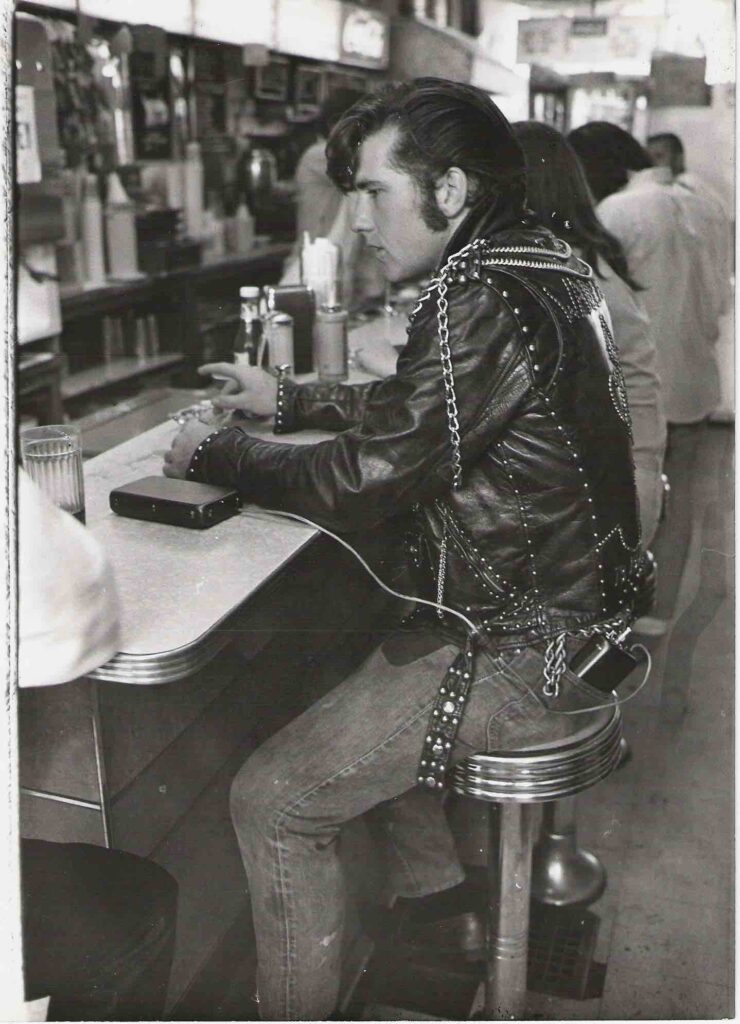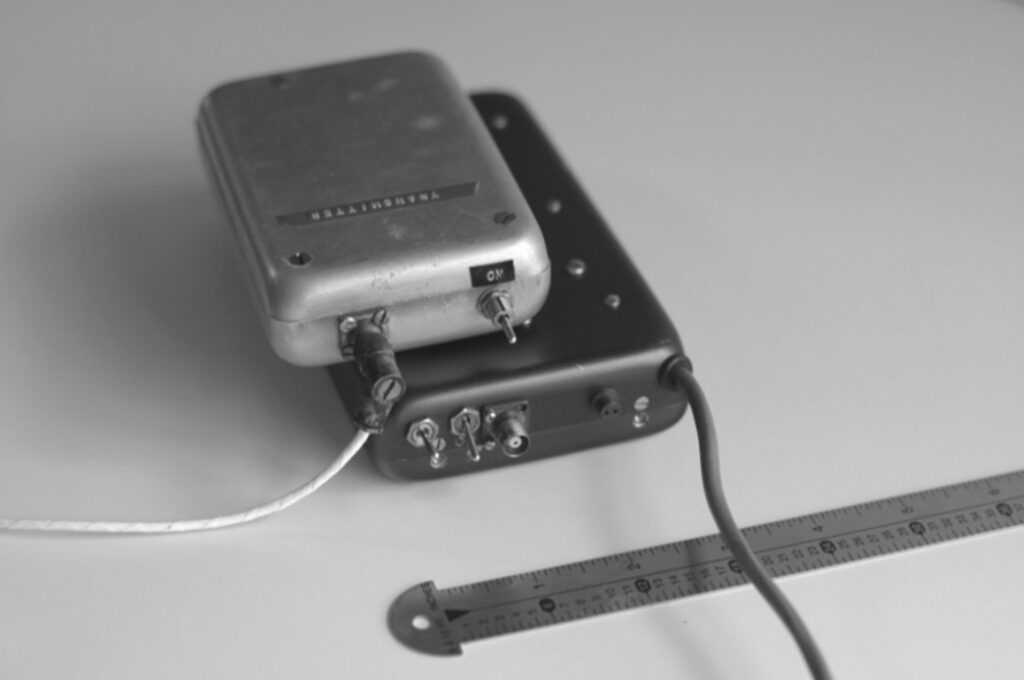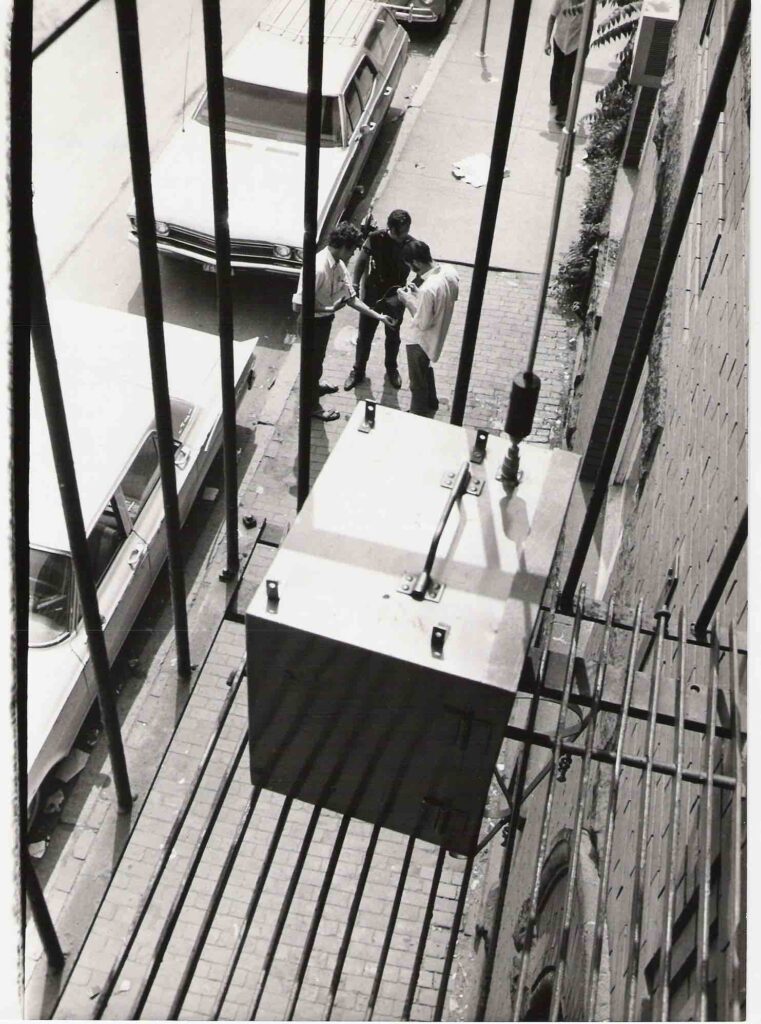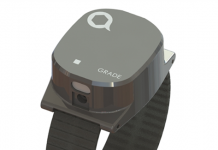West Side Story is hitting the big screen again! More than 60 years after the original 1961 film premiered, Steven Spielberg is remaking West Side Story. Does anyone still remember the story between this film and Ankle Monitor 60 years ago?

West Side Story (1961), directed by Robert Wise and Jerome Robbins. In this award-winning musical adaptation of Romeo and Juliet, Tony and Maria are two star-crossed lovers from rival New York street gangs, the Jets and the Sharks. The couple is ultimately forced to choose between their families and pursuing their love.
In a series of ironic twists, the protagonist is killed by a rival gang member. The acclaimed film stayed-on as reruns in movie theaters for years, and it was a favorite of Ralph Kirkland Schwitzgebel, then a graduate student at Harvard. He described his inspiration for an electronic communication system as follows:
“I would take dates to the movie because it had a romantic effect on them. (I wasn’t very creative about what to do with dates back then.) By the third time I saw the movie, I had a good understanding of the plot. During the movie, the hero’s girlfriend tries to get to him in time to warn him of the danger of a gang fight, but she is too late. I wondered how we could have helped him. I thought, if only we could have sent him a signal. If only we knew where he was, we could have saved his life. Then I had an idea. If he wore a transmitter we would contact him and prevent his death”
The following week, Schwitzgebel met an electrical engineer, William Sprech Hurd, at a cocktail party. This began a cordial and productive relationship until Schwitzgebel moved to California in 1975. An office was established in a vacated corner storefront in Cambridge, MA, where at-risk youth, parolees, psychiatric patients, and student research volunteers participated in various behaviorally-oriented research projects between 1960 and 1975. The original location monitoring system included a combination of surplus missile tracking equipment, portable transceivers, battery packs, and stationary radio-frequency relay stations.

The portable equipment was quite cumbersome. The monitored individual carried a 27 MHz AM transmitter and a separately housed timer/encoder unit which provided a 600 Hz and an 800Hz audio signal to the portable transmitter.

If the transmitter of a wearer was within a prescribed urban area, it would activate a stationary relay station every 30 seconds. The signal was transmitted to the antenna (mounted on the steeple of the Old Cambridge Baptist Church), then relayed to the base station. The size of the monitored area depended upon the number of relay stations and the transmission characteristics of the environment. The monitored area usually covered about five square blocks near the participant’s place of residence. A patent was granted on the system in 1969 (Schwitzgebel and Hurd, 1969).


One study (Schwitzgebel, 1969) summarized the results from sixteen participants who ranged from an offender with over 100 arrests and eight years of imprisonment to a young business person with no arrests. The results indicated that the participants either adjusted to the monitoring system within the first few days or rejected it as too intrusive and embarrassing. Reports of this experiment (e.g., New York Times, 1969), typically brought negative reactions.
Reference: The Ankle Bracelet Is History: An Informal Review of the Birth and Death of a Monitoring Technology, Robert S. Gable, The Journal of Offender Monitoring, Civic Research Institute, 2015
















